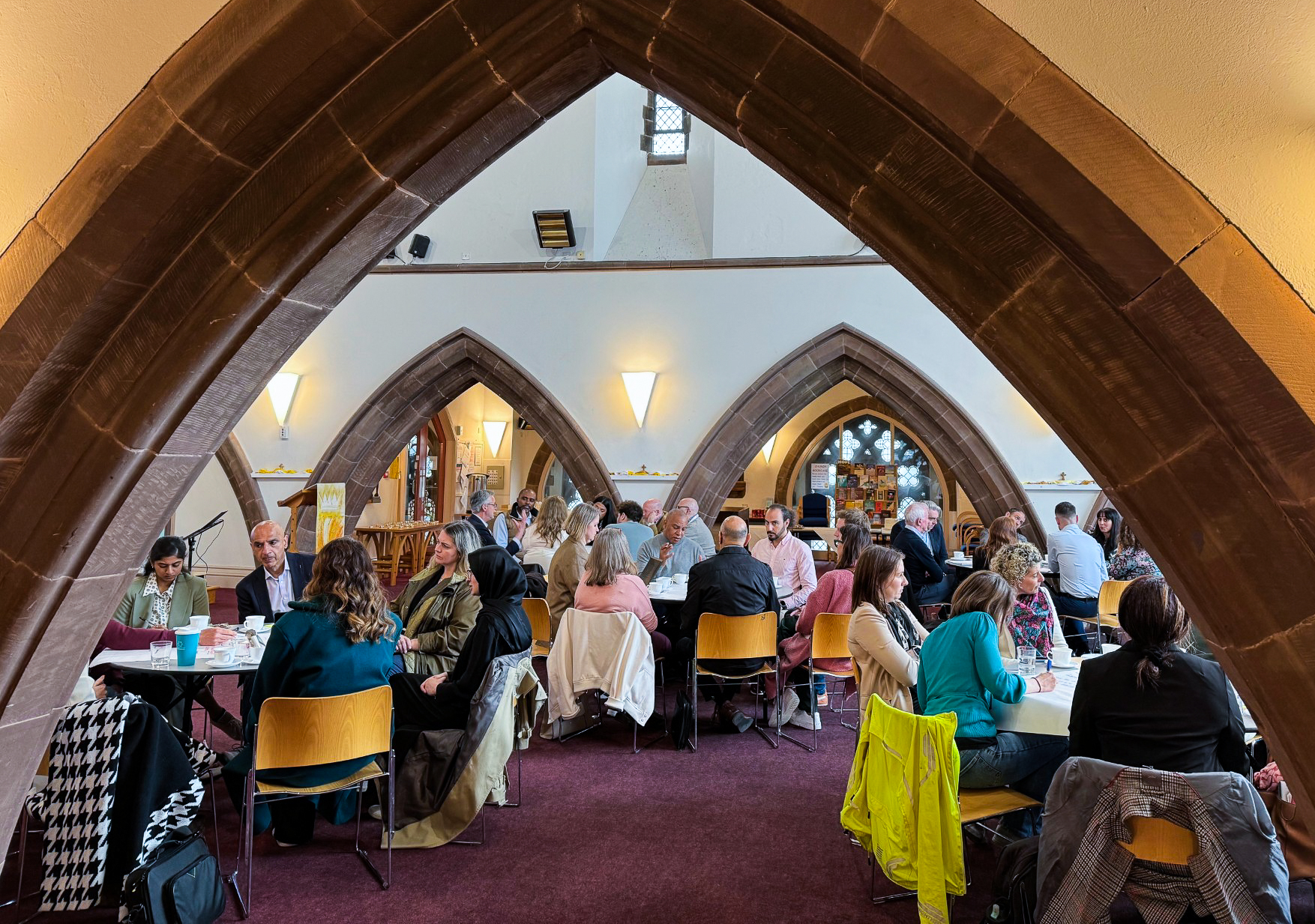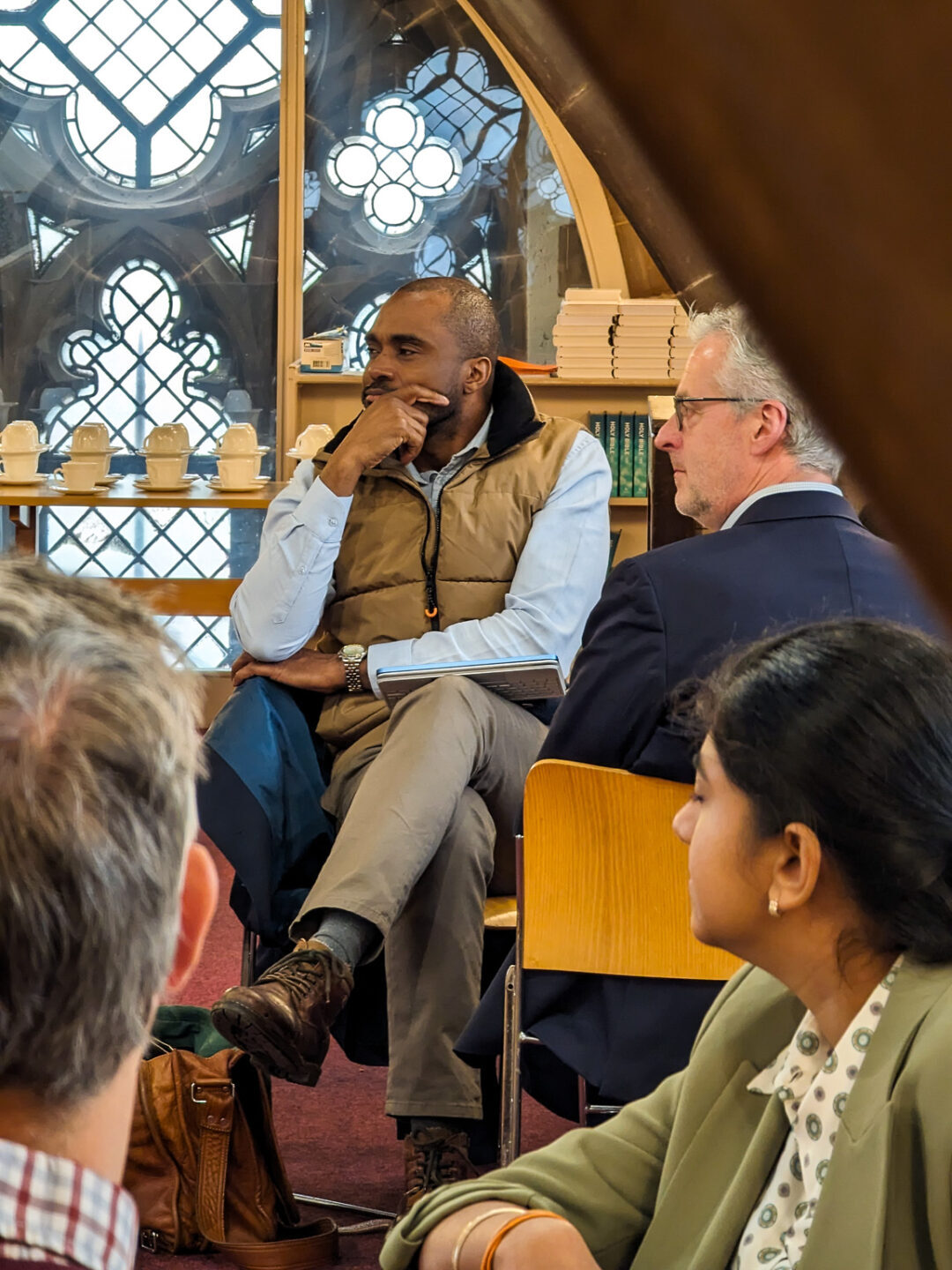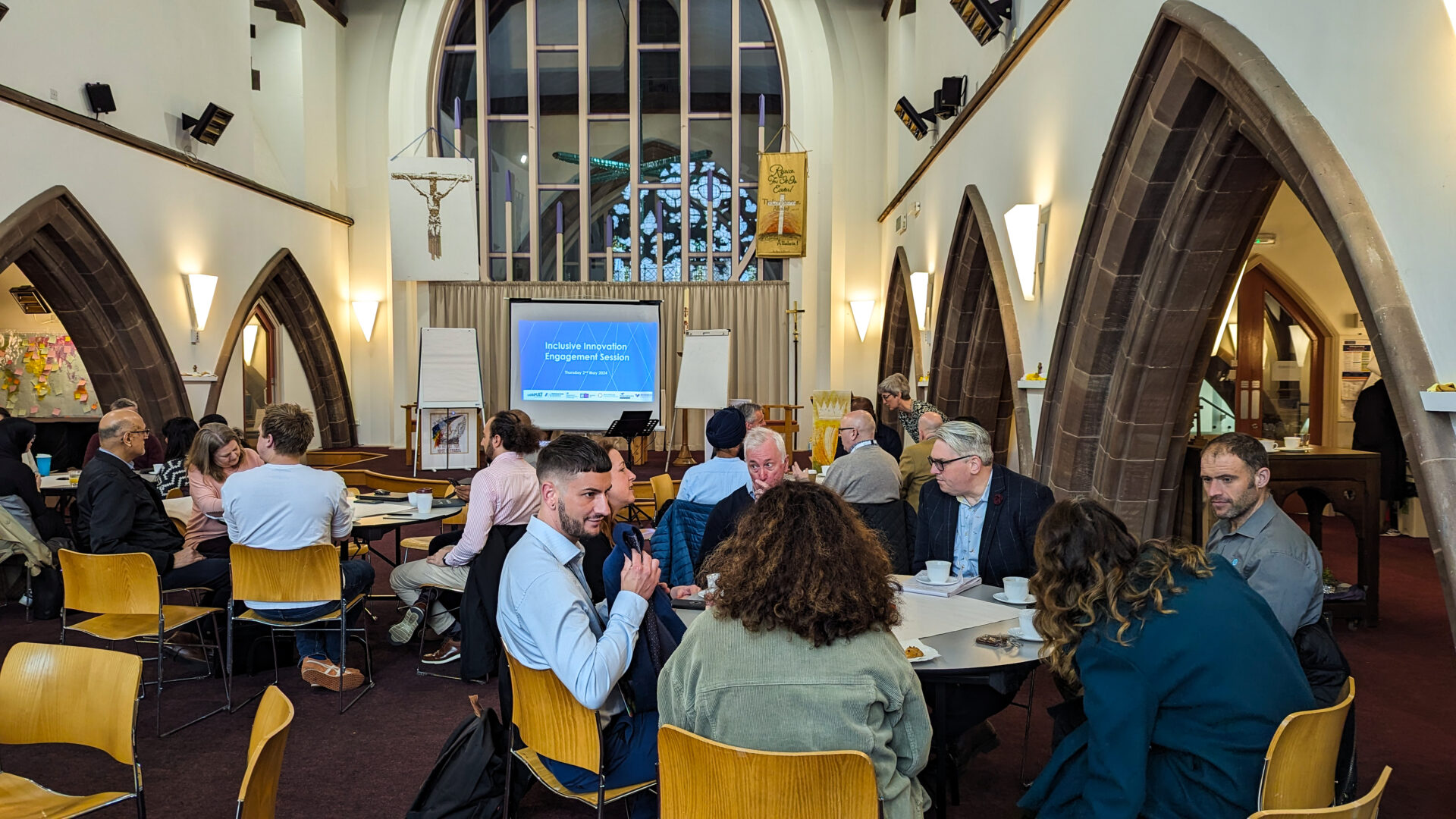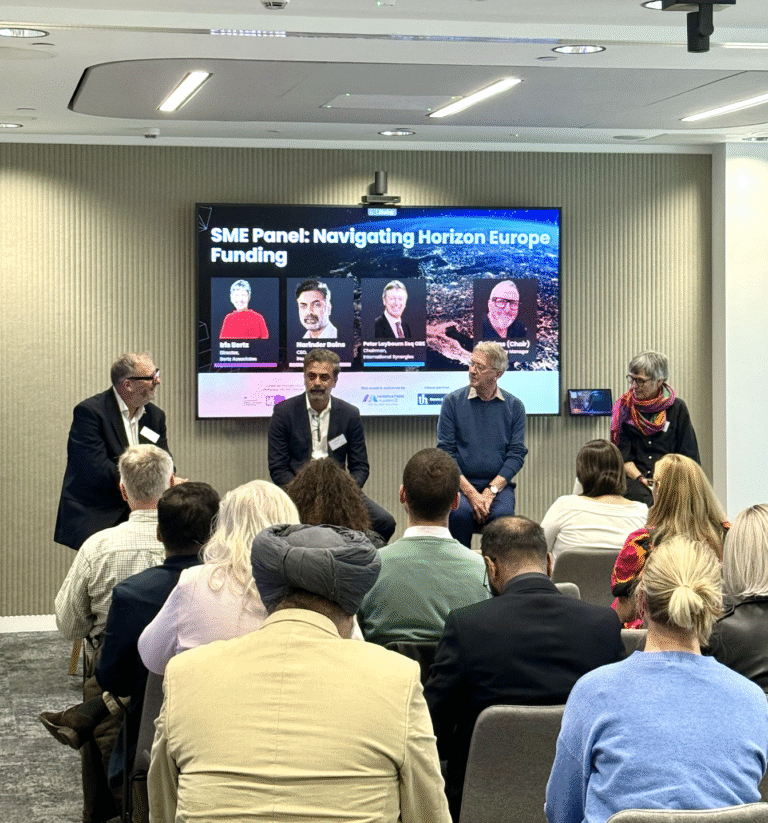
About the Event

The Innovation Alliance WM has always aimed to be inclusive, with its networks widely promoted and open to all. But more recently, we have been stepping up from this ‘passive inclusivity’ to a more proactive approach, as part of the WM Innovation Accelerator Programme. As ever, we have been working in partnership to benefit from the wisdom and experience of others – in this case, we have teamed up with the Connected Places Catapult, notably their Inclusive Innovation Manager, and the CREME team at Aston University.
Together, we felt an early first step should be to listen to people representing and directly working with disadvantaged communities and groups and policy makers seeking to support them. So on 2 May, we held a consultation event with about 40 such people in a community centre, The Crossing at St Pauls in Walsall, to understand the concept of ‘inclusive innovation’, its challenges, and enablers. We explored best practices from different stakeholders’ perspective to promote inclusive innovation in the West Midlands in a highly engaged and informed set of discussions.
For the purposes of this work, and based on an extensive literature review By CREME, Inclusive Innovation has been defined as “an approach that should involve the inclusion of women, youth, disabled, ethnic minorities or informal sector SME entrepreneurs in the process of innovation from initial idea generation to production/consumption of any type of innovation”.
The overall goal of this work is to make inclusion a part of all innovation policies, strategies and practices across the region, to promote effective economic development. The aim of the consultation session was to stimulate the conversation about Inclusive Innovation among different stakeholders and to develop informed suggestions about how the work should continue, particularly work on an inclusive innovation toolkit/ playbook to be used widely by policy makers and support providers in the West Midlands, and potentially beyond.
Summary of the Discussions
Session 1 – What innovation looks like and barriers and enablers in different communities/ groups
· Belonging: A key word is ‘belonging,’ and the need to genuinely understand what it means to belong, and to empower people to be part of a changing and a needing-to-change system but doing it from the inside out. Although an emotional word, practically taking this perspective makes us look at structures and initiatives that are going to create the time and space to enable genuine engagement, with some risk tolerance as people find a new way.
· Language: There is a gap in translation from academia to policy to the community. Do we really understand the dynamics and the language of different communities needed to be truly inclusive? To understand the challenges of innovation in and for the community and the baseline needs for supporting innovation, be those skills, transport, or digital, we need to know the right language and who to ask the questions – ‘What is innovation for you? What are your challenges?
· Ambition or access: For businesses embedded in or supporting particular communities, we need to distinguish between the dynamic of just needing enough innovation to solve a problem in that community, with no appetite for innovation or growth beyond that, versus a desire to innovate and grow but challenges in finding support to do that. These are two different challenges that need to be tackled differently, so it is important to understand which is the case each time.
· Technical vs social innovation: Innovation is quite often understood as a more technical concept, with activities to support innovation focussed on more technical businesses. However, there is lots of innovation across the social sector – a broader view of innovation is creating or adopting new ways of doing things to bring benefit.
· Support ‘sandpits’ and collaboration: It was suggested investors, innovators, and business support organisations should be brought together in ‘sandpits’ with businesses at different stages, where they can feel very comfortable knowing that they will receive relevant support, regardless of their business’s nature, and the support organisation they first came to. Support providers need to get better at cross-referral to the most relevant support services with business needs coming first – we need to change the culture from projects that hold onto businesses, because we’re so output-driven, regardless of whether support best meets the business needs.
· Innovation for good and for growth: Developing the sandpit model (above), we could connect the social and environmental aspects of innovation with the support that tech businesses usually easily access to create hackathons that enable more community need-driven innovation. If we can see ‘innovation for good’ as a growth opportunity as well as just ‘good’, creating the links between technical innovation, need, productivity, investors, growth, we can achieve a win-win outcome, rather than have these aspects exist in separate silos.
· Innovating investment: Looking at personal stories of those whose families originate outside of the UK, innovation for them was about ‘necessity being the mother of invention’ – e.g. grandparents who couldn’t get access to finance through the banking systems innovating the ‘pardoning system’ where people would throw in a hand, and then that hand would be shared amongst everyone and, hopefully, everyone paid every week. That challenge about access to finance and resources still exists, and we need new financial innovations to enable access for all innovative businesses, wherever they are and whatever the nature and scale of their ambition. This could be a system of matching potential investors (public or private) and businesses, not just putting a price tag on returns, but also the social impact they’re making in an area, trying to match the right investors. We’ve got the second highest number of start-ups outside London, but too many fail, perhaps because of a lack or wrong type of investment.
· Celebrate champions and role models: There were a lot of champions and role models in the room, but are their voices being magnified? Have they had the opportunity to tell their stories and really advise and make a difference, beyond a tick the box exercise of consultation or fulfilling quotas? Do we do enough to celebrate people and organisations that are truly inclusive and calling out those that are not?
· Sustained dialogue: Building on the above, policy makers and support organisations need to establish ongoing and open relationships with champions within the community and with underrepresented groups – they are not ‘hard to reach’, we just don’t always make the effort to reach out and adapt our language and tailored it to the needs of each group.

Session 2 – Developing a toolkit/ effective action for policy makers and business support providers to support Inclusive Innovation
· Understand the audience: Consider the audience for the toolkit – innovators, business support, policymakers – and then see the toolkit through their eyes, because what their requirements will be slightly different. So, a truly inclusive Innovation toolkit is a complex thing with lots of nuance to create a system that’s for everyone, that does everything.
· Triaging and tailoring support: A toolkit must be based on understanding different types of users and providing varied/ targeted support around those user needs. This requires a good triage system for any support organisation, so you might enter through the same (web) portal but depending on your needs and where you’re coming from, there would be tailored guidance for you to go through. For example, around something as specific as innovation procurement, support is going to be very different if you’re working in policy and funding delivery versus if you’re a micro-business that’s never responded to a tender before, so though the same theme requires tailored guidance.
· Community Business/ Innovation Hubs: These were supported as a focus for putting (different) community dynamics at the heart of everything.
· Learning support system: Inclusion of a feedback system to enable continuous learning for support systems and providers, providing read across of understanding between the different users and different types of support, would enhance effectiveness.
· Better data to inform policy: Learning systems (as above) could also allow access to information on what is being recommended and is helpful for different types of business, so policy makers are more aware barriers and complications are for different types of businesses. A lot talked about in session 1 (above) start upstream, that is in the way that policy has been designed and delivered or the way that funding is being disseminated. Better data could help decision-makers, funders or investors to understand the variations that we’re talking about between needs of different types of organisations in different settings.
· Importance of stories: As well as data though, given different groups use different language, we need to use stories, case studies and champions to bring the toolkit to life. How does support feel for a business? How has it changed their life?
· Is toolkit the right word?: Whilst useful to have the guidance and commonality of approach, it was questioned whether the term ‘toolkit’ sounded too rigid and did not best describe what was needed. Perhaps it is more (i) a ‘code of conduct’ on different language and engagement styles and different routes to engagement for different groups, combined with (ii) a flexible ‘playbook’ which includes a library of information on all sorts of things that are relevant to innovation and a best practice guidance based on what is already out there, to avoid reinventing the wheel, but rather keep that wheel going in the right direction each time!
· Who is accountable or responsible?: There are questions about who is accountable for inclusive innovation, and who’s responsible? Who is responsible for overseeing/ conducting/ orchestrating a collaborative and continuously learning support system? Who are challenging support providers and policy makes to use the toolkit and to narrow that gap between policy, business support, and the businesses? Who is responsible for ensuring co-creation/ collaboration to do right thing at the right time for different communities and businesses? Who informs and becomes informed about outcomes to ensure it is a learning system? Perhaps policymakers are accountable for the vision, the scope of what they’re doing. Solutions are co-created between support organisations and businesses/ communities, and the outcomes and the impact are measured and reported by the business support community to ensure learning.
· Impossible to be Inclusive to everyone at the same time: It is important to recognise you can’t always be inclusive to everyone in everything you do and tick all the boxes at the same time – this might scare people off doing anything if they don’t understand that. For example, a scheme for female founders will not include men. But to create equity, targeted interventions are needed to build a whole system that is ultimately inclusive.
· What’s in the toolkit?: There are many tools that could prove very useful in a toolkit and some of these tools must be about the earliest stages of engagement. Some of the highlighted things are (i) approaches to help people surface (and how do we do that at scale) using different bespoke methods and modes for different subcategories of communities. (ii) a module about storytelling and how do we pay this out into a community and how people can visualize and experience innovation in a relatable way. (iii) guidance on culture and how to respect different cultures but equally explaining the support culture back, e.g. not everyone has come from a place where there is all this red tape, but we have reasons to have it here.
· Consult with a young audience: Important not to only discuss this with more experienced and senior people, but to consult with younger people who are the businesses of the future, given they communicate and operate differently.
· Keep sharing: This session has been useful to use everybody’s resource and experience to help collaborate, share knowledge and experience. This should happen more regularly, so it becomes a norm, recognizing that there are problems in the system, to break that down a bit more, and continuously try to improve, learn and evolve. This isn’t a static thing, it will keep changing, so we need to keep learning together and have a flatter hierarchy.
Closing Note
This blog simply records the main points of discussion on 2nd May so all those involved, plus a wider audience, can consider and use it to shape how they can operate in a more inclusive way with respect to innovation support and policy. The Innovation Alliance WM, Connected Places Catapult and the CREME team at Aston University will now digest this and the more detailed notes from the day to further develop the code of conduct/ toolkit/ playbook approach to building a more inclusive innovation ecosystem in the West Midlands.







